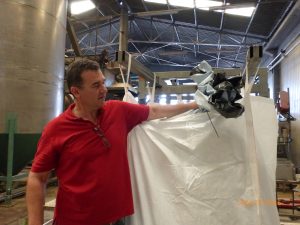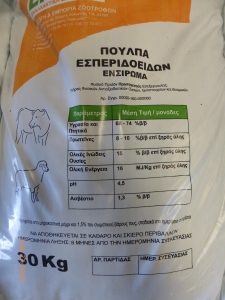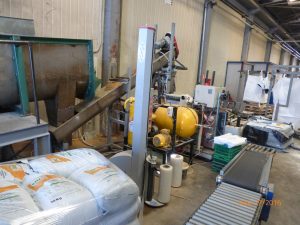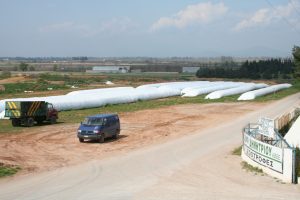Occasionally we receive inquiries in regards to processing small quantities of citrus waste into animal feed. Juice plants with two to four orange juice extractors will inquire about the cost of a citrus peel feedmill. They will mention having a few truck loads of peel available per day.
It falls on us to explain that it is rare to find anyone running less than 20 tons an hour of peel, over at least one long shift each day. Certainly no one would build a new feedmill for that small a capacity.
A novel solution for making citrus waste into a byproduct has been proven in Greece. There the high cost of dryer fuel has led the largest processors to shut down their drum dryers. Even with all of the capital equipment long amortized, high energy costs have made it impractical to operate their feedmills.
Instead, they ensile their citrus waste. Ensiling is a process of partial fermentation which enhances the nutrient value of forages used for animal feeds. For example, green corn stalks can be chopped and filled into a silo with limited availability of oxygen. The silage formed in the silo is a better animal feed than the raw stalk. Ensiling improves the nutrient value by 10% to 25%.
The same improvement can be achieved with citrus waste. But first the moisture content of the peel must be reduced. Typical orange peel has 80% moisture. This peel is reacted with hydrated lime and then run through a screw press, which reduces the moisture content to about 74%. Press cake from the press is then sealed in one-ton plastic bulk bags. This keeps the oxygen out (to prevent spoilage) and allows ensiling to proceed.
A month later the ensiling process is complete, and the value of the orange peel has been raised from waste to a value-added animal feed. This ensiled citrus waste is mostly sold in bulk. However there is a market for bagged material as seen the photos which follow.
Interestingly, this same ensiling process came into vogue in California in the 1990’s, but on a much larger scale. Bureaucratic state environmental regulations led to shutting down all the citrus peel dryers in the State, and ensiling citrus peel in gigantic 10′ by 300′ (!) Ag-Bags became the norm. Pressing News #36 of November 1995 covers the subject.
One potential problem area must be mentioned. Since the raw 80% peel will spoil rather than ensile, it is necessary to first press the peel down to ~74% moisture. This converts about a third by weight of the peel into press liquor. This liquid will have the same amount of dissolved solids as the peel, about 10 Brix, so it represents a significant load on the wastewater treatment plant.
For those with deeper interest, here are some publications:
Silage has 10-25% greater feed value than same crop cut as hay
https://www.beefcattleinstitute.org/wp- content/uploads/2013/factsheets/nutrition/beef_cattle_nutrition.pdf
Common terms, Relative Feed Value (RFV)
http://extension.uga.edu/publications/detail.cfm?number=B1367#R
Alfalfa hay versus alfalfa silage
http://feedlotmagazine.com/archive/archive/issues/199909/alfalfa_pg52.html


68-74% MOISTURE, 8-10% PROTEIN, 4.5 pH, 1.3% LIME


Issue 289
